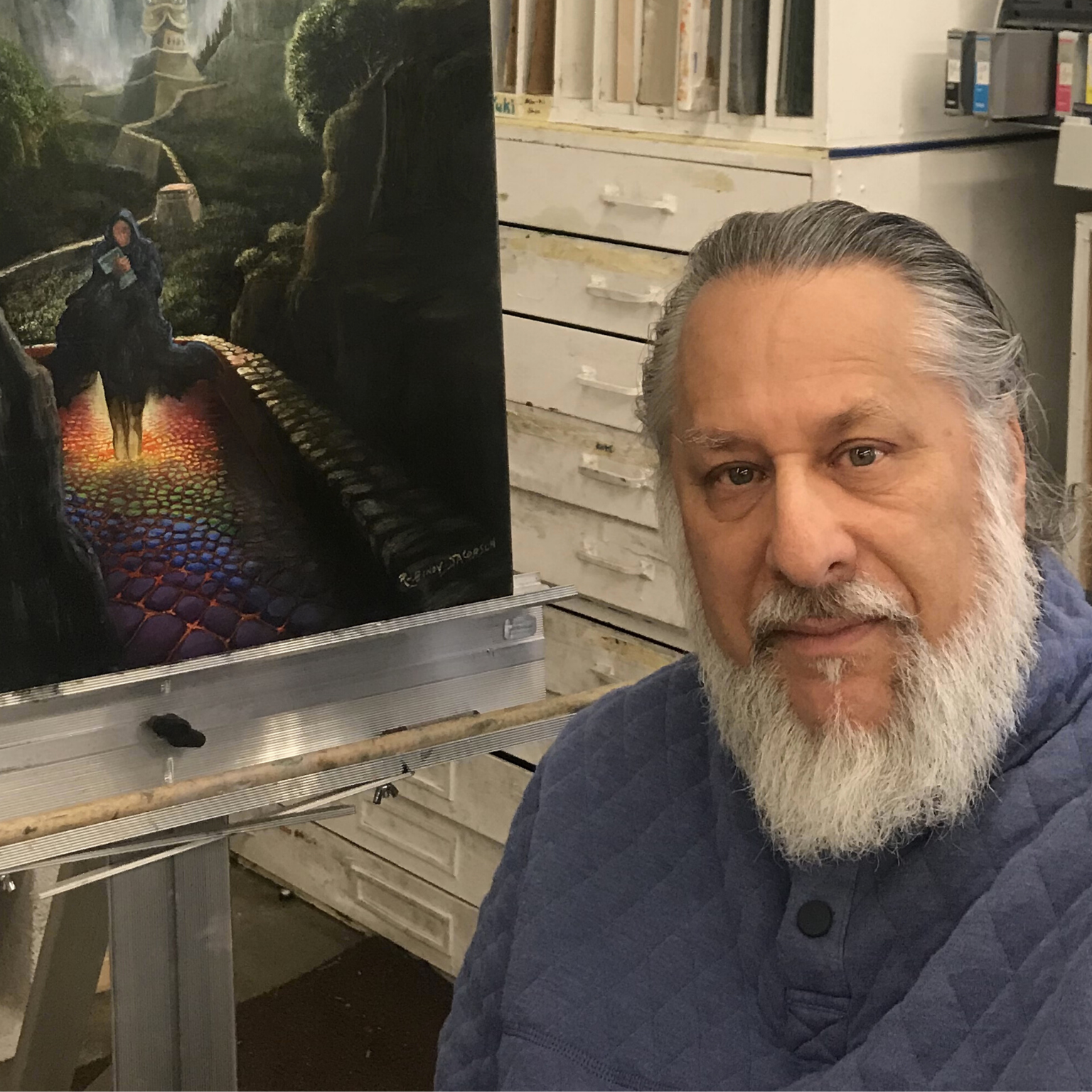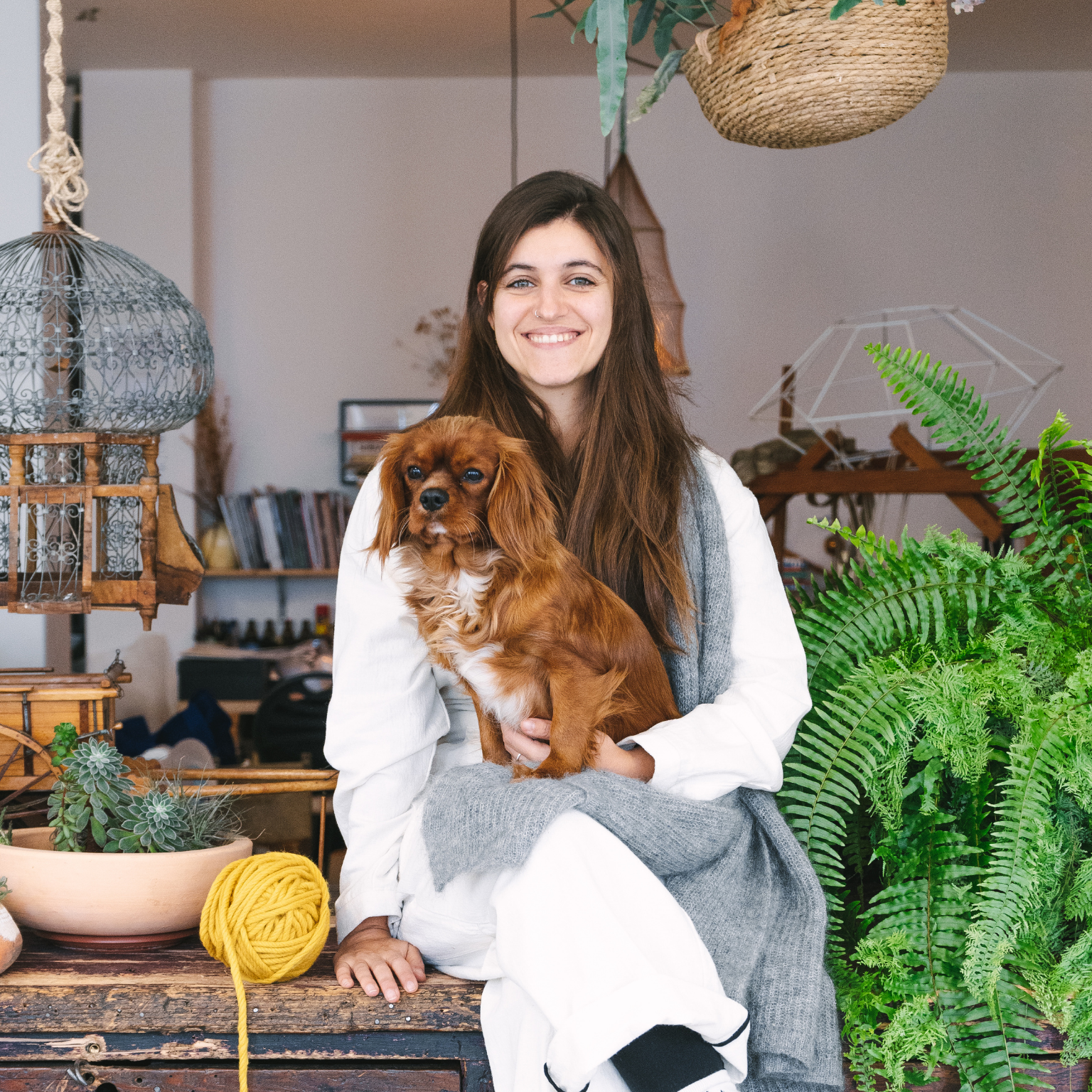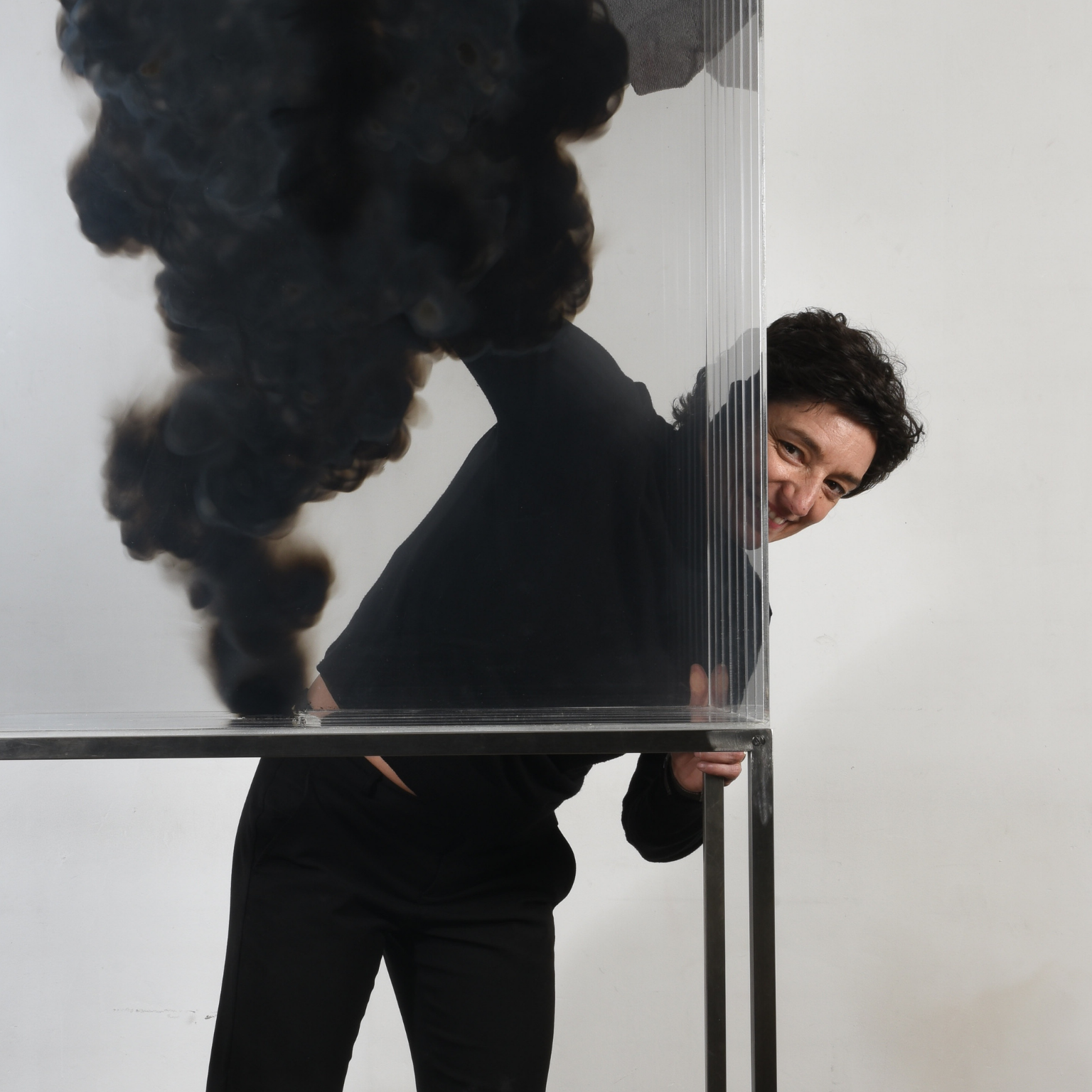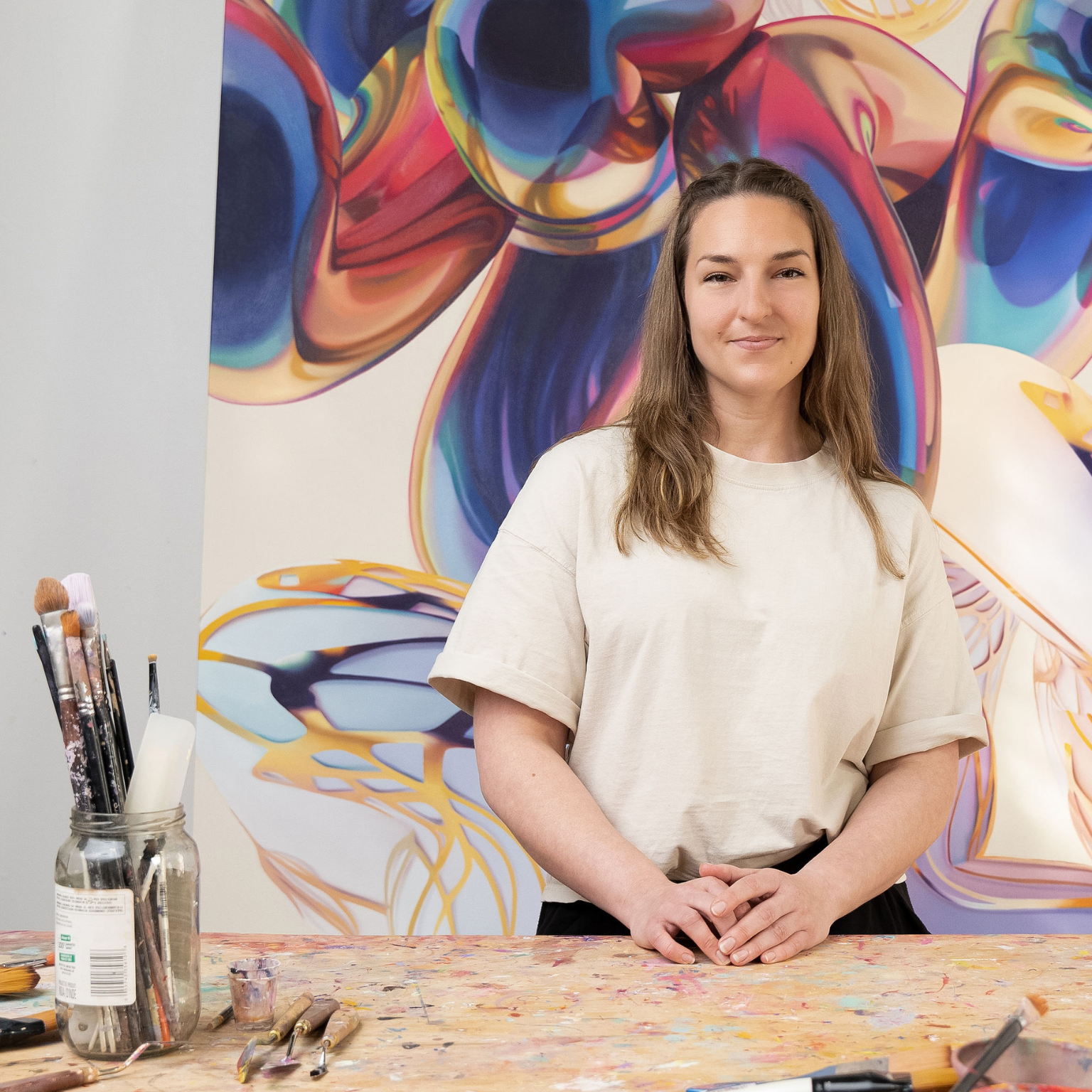Philip Rubinov Jacobson, artist, author and educator from USA. Photography © Liya Tomaszewicz
1.In your opinion what is the role of a museum?
From my point of view, when science and technology married in production, art became lost in the ceremony. After the wedding of Science and Industry in modern modernity, an all-out effort succeeded in dominating and colonizing the other value spheres, like Art and Religion, effectively initiating a destruction of the need for the integration of the Beautiful, the True and the Good.
Some art museums today have fallen to this conditioned view of Science and Technology ruling over the domain of Art and allowing, encouraging and even guiding their museum toward a Pseudo-Techno Art.
Today, I believe the role of the art museum is to turn its artful eye toward integrating and synthesizing, which is something our fragmented and over-specialized age sorely needs. Although there is an overwhelming need for that in the future of art museums, many of those who run museums believe the now and future role of art is to move toward exclusively utilizing technology for artistic human expression. I strongly disagree.
It is important that museums support artists, not just dead or established artists, but unknown, young and older artists from all walks of life. That support needs to not only include museum decision making on aesthetic and practical levels, cultural and educational direction, but financial support as well.
This is important because I think that museums are going to expand their boundaries and become more multipurpose as well, positively broadening their scope and impacting the future. I think marvelous things can come of this if the realm of Art is valued in its own sphere of influence and communication, creating new avenues of aesthetic experiences and an education that expands the mind and enlightens both individuals and society as a whole.
2.What are your favorite museums in the world? Why?
There are too many museums that are favorites to name here, but I will share some of them:
The National Gallery, London
London is a city full of great museums and the National Gallery, the Tate and the British Museum are easily at the top of my list. Unlike many European museums, entrance to all the museums in London are free and the State picks up the bill. Something I believe should happen with museums everywhere. Their Gallery’s collection is intelligently varied, magnificent and extremely important to the art lover, artist, scholar and traveler.
The National Gallery of Art, Washington, D.C.
It would be very hard for any museum around the globe to boast that their collection includes some 141,000 paintings, drawings, prints, photographs, sculpture, decorative arts, and new media tracing the development of Western art from the Middle Ages to the present. But this is the case with the National Gallery in Washington, D.C. The Sacrament of the Last Supper is housed here.
It is a painting done by Salvador Dalí in 1955, which he spent nine months work on. Dali is one of favorite artists, but, what I love about the museum is the fact thatsince its arrival at the National Gallery of Art in Washington, D.C. in 1955, it replaced Renoir’s A Girl with a Watering Can as the most popular piece in the museum.
The Uffizi and City of Florence, Italy
This is where the work of many of my Renaissance heroes resides. Indeed, UNESCO says that 60% of the world’s greatest treasures of Art reside in the City of Florence and I agree with that. I am speechless in trying to describe it.
The Many Small and Unusual Museums
In Europe, one of our favorite things that my wife and I love to do, is to discover and explore the small collections like that of my mentor at the Ernst Fuchs Museum, in Vienna, Austria, Da Vinci’s childhood home in Vinci, Italy, Michelangelo’s house in Florence, The Gothic ‘BONE’ church standing in Sedlec near the quaint Czech Republic city of Kutná Hora, and El Greco’s house in Crete – Museo del Greco, to name but a few.
On our bucket list is the Musee’ National Gustave Moreau, National Museum of Women in the Arts, Washington, D.C., The Mucha Museum in Prague, Czech, Claude Monet’s Garden at Giverny, France and the many obscure and eccentric science, history, natural and technological museums to be found as well.
3.How important are social networks in your business? And which platform do you prefer and why.
Being fortunate in having somewhat of a ‘name’ in certain sectors of the art world, my business as an artist selling his work, taking the occasional commission and holding an annual summer painting seminar – has enabled me to thrive with only an announcement of such activities on my website and my various pages on Facebook. Interviews, such as this, also works favorably for an artist via cyber news outlets and social networking.
4.In particular, due to the coronavirus emergency, how have you changed your business on social networks?
The biggest. An interesting thing I have noted, is, that as a positive result of the global pandemic crisis, and social distancing – more people are involved more than ever and taking a quantum dive into social networking and educational and artistic platforms on the net.
Personally, in contradiction, I have found that I engage in social networking even less and prefer to work more and more in my art studio. I believe I am twice as productive now. That is the biggest change.
5.To create greater engagement among museums, artists and professionals, do you have any advice for cultural projects such as #MuseumWeek?
The potential of online Magazines, Seminars, Virtual tours, and social media campaigns have always been there, but now the opportunity for impact is incalculable.
In the blink of an eye, once-crowded museums sit empty. I believe Museum Week in this age of social distancing and potential quarantines is in an opportune time and position. It is a time for technology to step up as the handmaiden of art and fill the void. This is what we are experiencing at Barton Community College in the USA, where I teach Painting, Drawing and so on.
I would propose MuseumWeek to become a Virtual Museum of Resources not only for the many things you already do but also to include E-Learning, Remote Classes, and a roster of International Visiting Artists in which people can visit in Real-time, access to endless open content, educational resources for e-learning, virtual retreats to experience art, culture, and history around the globe.
If you’re a museum tech enthusiast looking to be part of the conversation, join one of MCN’s Special Interest Groups (SIGs). They are currently free for non-members so more can share resources during the COVID-19 pandemic.
Interview by Fabio Pariante, journalist
MORE
Philip Rubinov Jacobson on social networks: Facebook
Philip Rubinov Jacobson is an artist, author and educator from Rochester, New York, and holds an Masters of Fine Art degree in Painting & Printmaking, an MA in Painting and Sculpture and a Bachelors degree in Studio Arts and Cultural Anthropology.
At 19 yrs. old he left the USA to study painting under his mentor, Ernst Fuchs (1930 – 2015), co-founder of the School of Fantastic Realism in Vienna, Austria. In 1997 Prof. Fuchs requested that Phil formally carry on his teachings in the Mischetechnik (German: Mixed-Technique) of painting in egg tempera and oil. His renowned Old Masters – New Visions international painting seminars have been a main-stay ever since. In 2012, his wife, Mantra Cora, joined him in organizing and teaching in the seminars.
Rubinov’s travels have been extensive, including India, where in 1978 he studied meditation, Eastern philosophy and wandered naked with a group of sadhus. In 1995, the professor founded and directed the New School of Extended Studies at Naropa University in Boulder, Colorado where he served as the Dean from 1991-1997.
Rubinov is the author of the now classic and recently joined the faculty at Barton Community College in the USA.



